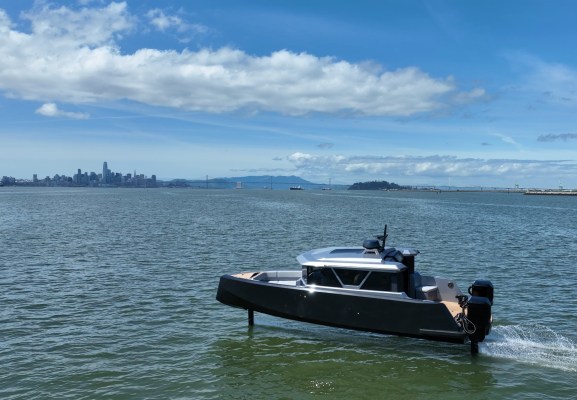Electric boats are still a rarity on America’s waterways, but everyone seems to agree they represent a cleaner, quieter future for our lakes, rivers and coastal waters. Navier has moved impressively quickly from idea to prototype to production boat, and the startup is now touring the West Coast, winning admirers in high places who hope to fit its electric hydrofoiling watercraft into a reinvented marine economy.
The boat itself, the N30, only existed on paper at the start of 2022, but by the end of last year the company had a full-scale prototype on the water and had taken the wraps off a cabin version at a big boating show; now that one is on the water too. The velocity is impressive to say the least — but they need something more than innovation to turn that velocity into momentum.
To that end, Navier is doing a bit of a road show, on the water of course, and will be visiting a number of major water-adjacent communities, first among them (in visiting order anyhow) San Francisco and its eponymous Bay. Next up are Los Angeles, Lake Tahoe, San Diego, and “the Pacific Northwest,” by which I assume they mean Seattle, jewel of the PNW.
The company is in no hurry, though: they’re not just buzzing the marinas and boardwalks to build up hype. If this boat is to become more than a novelty, it needs to have a purpose, and the hope is that it can find work as a water taxi serving smaller, more frequent routes.
Big ferries hold hundreds of people but need special docks; smaller ones less so, but the economics are slightly shaky due to the high cost of fuel and upkeep. Navier’s N30 is smaller still (six passengers for this cabin variant, but larger versions to come), but with that comes the benefit of offering point-to-point travel rather than working from a major hub. (The 75 nautical-mile range is more than plenty for most coastal runs.)
Essentially a leisure craft reduced to working for a living, the N30 can fit in just about any marina or even small private docks. And the boat will also soon incorporate autonomous docking, making the most touchy part of the journey simpler. Being a hydrofoiling boat, the N30 has no wake and rides even choppy waters, so it’s not just a comfy trip but won’t flip kayakers it passes at speed.
And of course it’s quiet and doesn’t dump a bunch of oil and carbon into the air and water — increasingly things people care about. (The hydrofoiling aspect makes it less suitable for certain applications like very shallow water or shipping, but this is obvious to boat people — you don’t tell someone their EV is going to have a hard time doing long-haul trucking.)
More importantly, it could be something that city governments and the marine industry care about. Having a fast mover or two in addition to your big ferries is a smart move, since there’s inevitably someone who missed their boat and doesn’t want to wait, is willing to pay a little extra to be dropped off a little down the way or has a regular commute that’s awkward on the existing options. Some people might even take it just to avoid getting stuck in [insert infamous bridge] traffic.
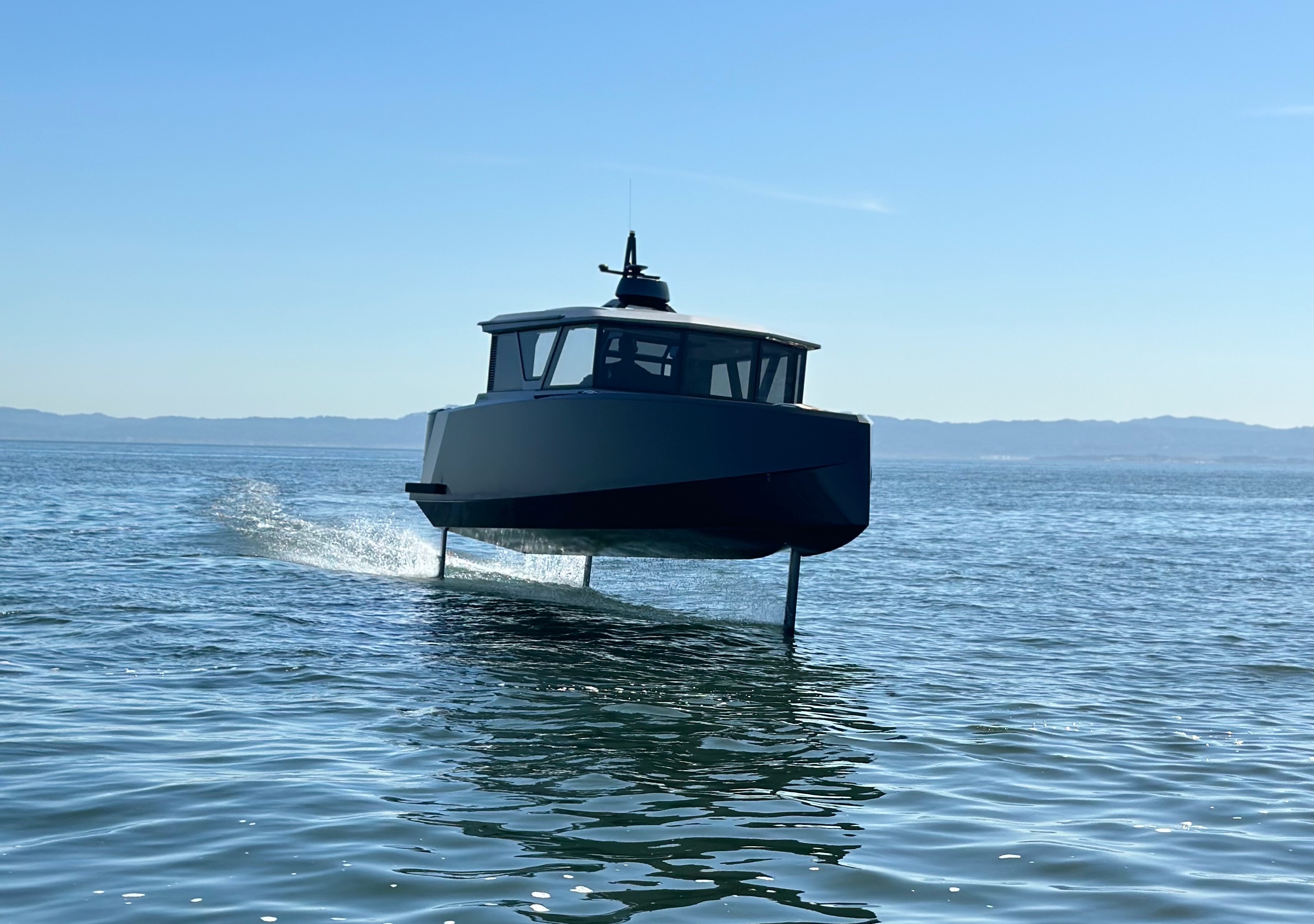
Image Credits: Navier
The latter is the real direction that co-founder Sampriti Bhattacharyya hopes to go in.
“Our aim is to complement the current public transportation infrastructure by decreasing the number of single-occupancy cars as much as possible,” she told TechCrunch. “Navier Mobility water taxis will eventually operate on optimized routes wherever there is demand. For instance, they can run early in the morning, during off-hours, or late at night along already established ferry routes, or during weekend events such as baseball or basketball games.”
That’s all very much TBD, of course, considering there is only the one N30 on the water at present, but production is underway and they’ve got a ton of orders. And the road show is already impressing some local officials and maritime industry folks. It got a chance to shine at the latest SailGP, acting as chaser and shuttle; the prototype got a clean white livery:
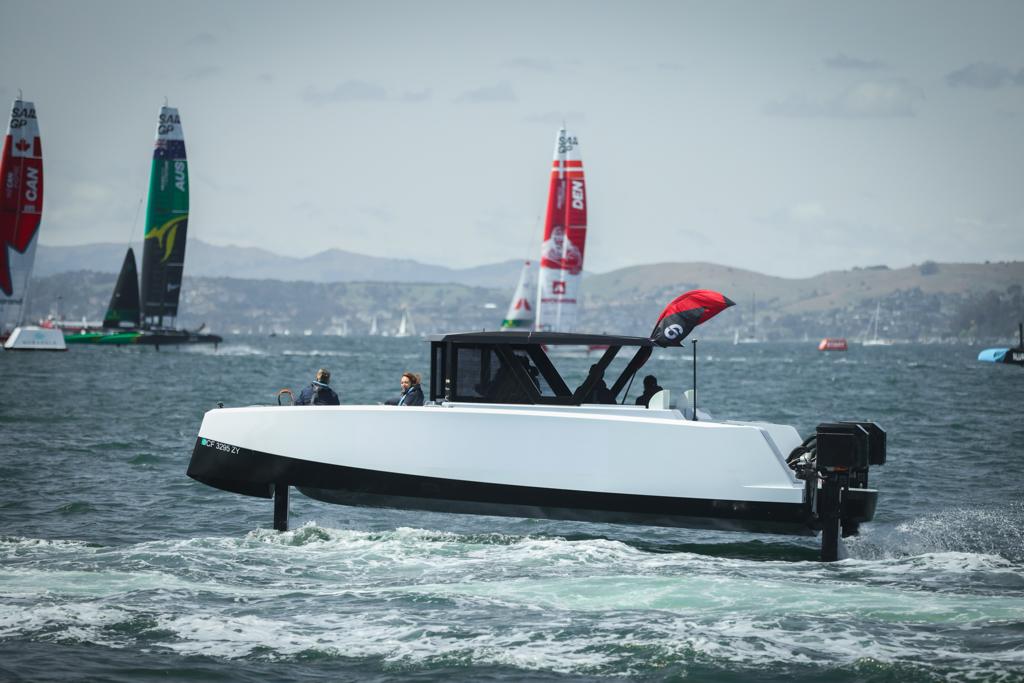
Image Credits: Adam Asdel / Navier
And here’s the hardtop taxi variant:
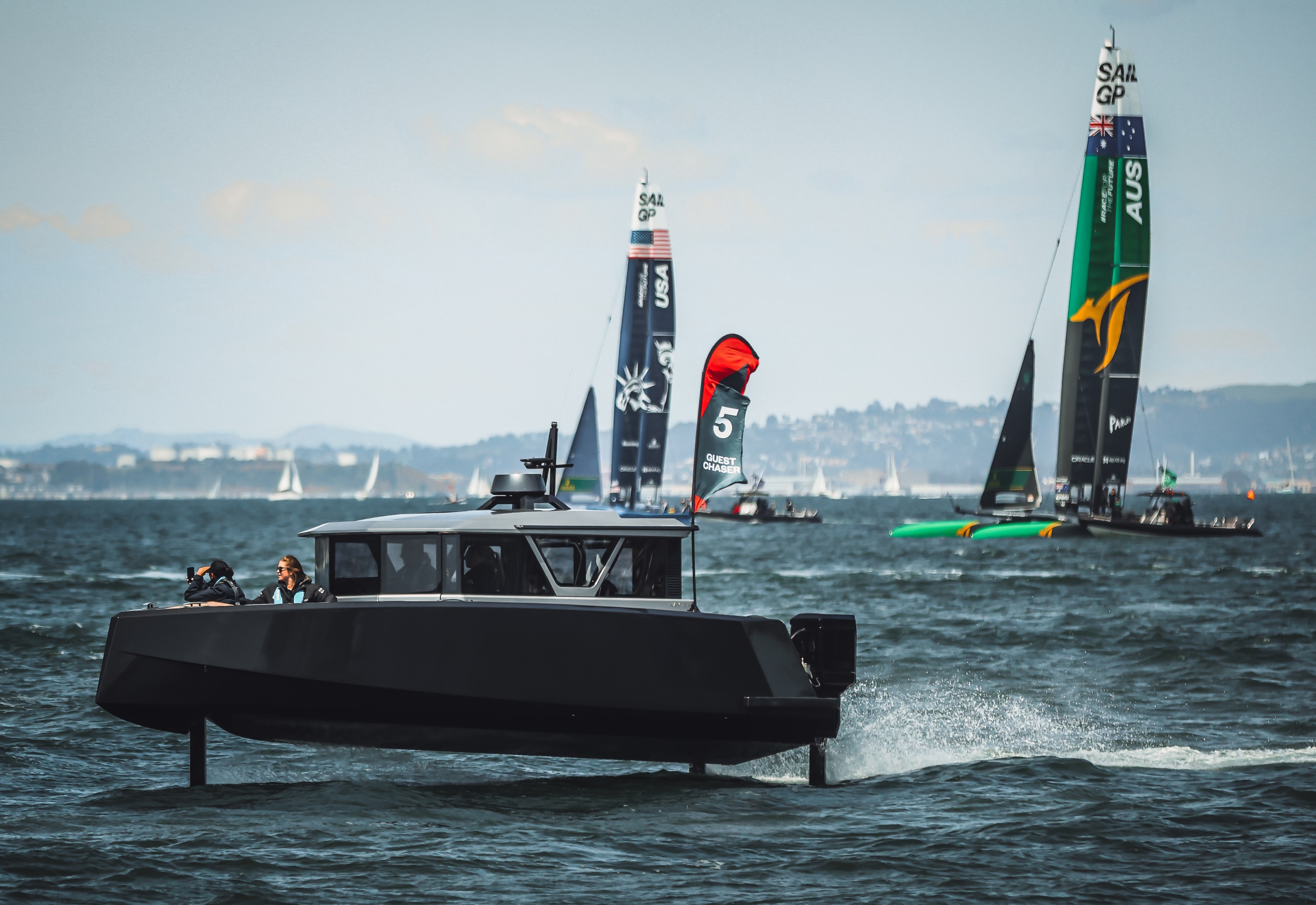
Image Credits: Adam Asdel / Navier
No wake means less interference with competing boats, of course, and with the docks and beaches where spectators are waiting.
Potential customers are already eyeing the vessels:
“I think the Navier electric hydrofoil shuttle is the water transit vehicle of the future: smooth as silk, super quiet, fast, no smelly exhaust, and no wake,” said Alameda county’s planning director, Andrew Thomas. “For Bayfront communities like Alameda with busy residents commuting all over the Bay Area, the electric hydrofoil water shuttle provides an enjoyable, pleasant, fast, environmentally superior alternative to driving on our increasingly congested freeways and bridges.”
Sausalito city council member (and not long ago, mayor) Janelle Kellman agreed:
“This makes a ton of sense for us on a number of different levels,” she told TechCrunch. “We love this project. We’re working on coastal resilience and sea level rise, but my next two years are all about the blue economy, and catalyzing new efforts at electrification.”
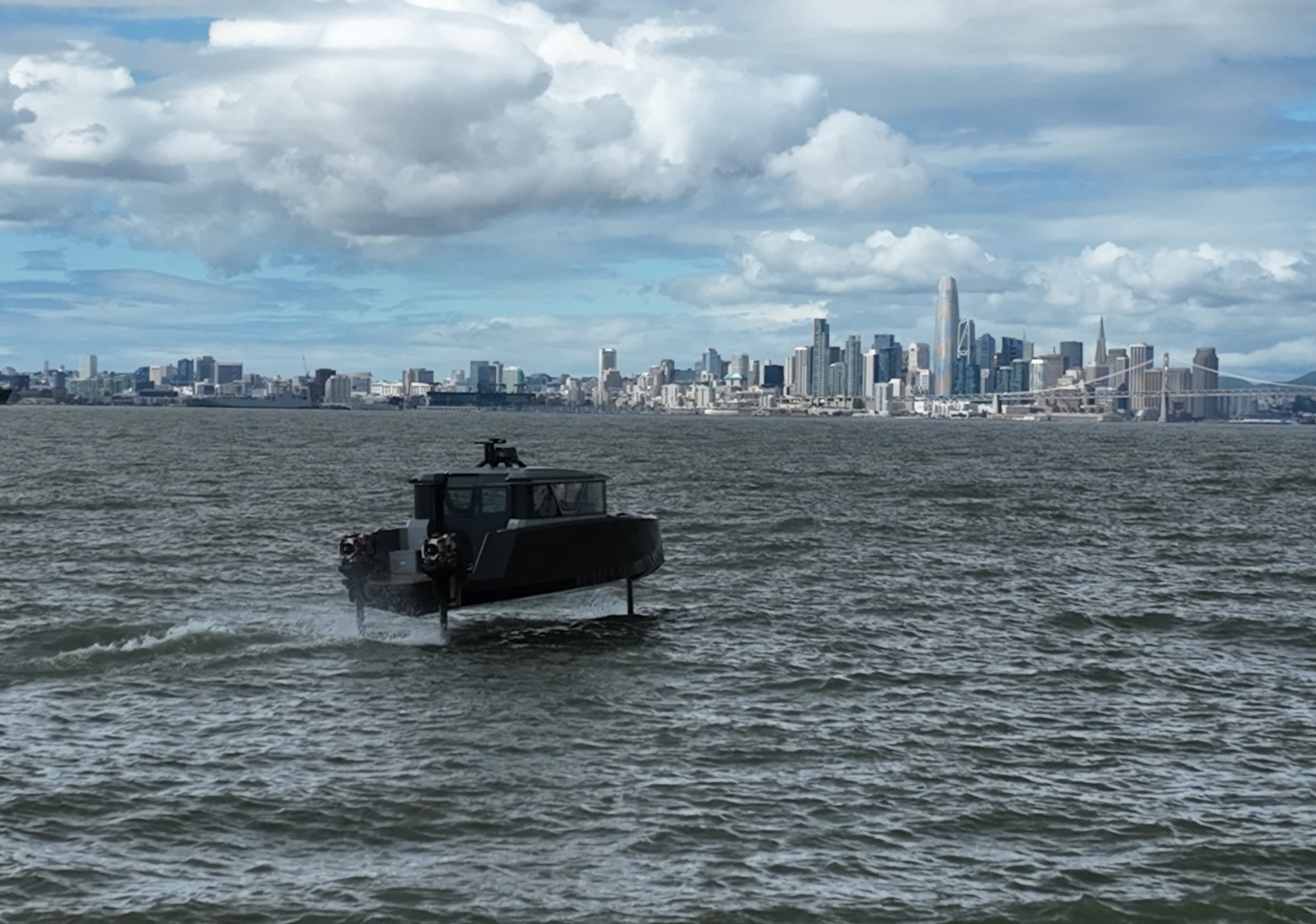
Image Credits: Navier
Various Bay Area institutions are moving to electric as technologies and budgets permit; the Alcatraz ferry, for instance, is undergoing electrification.
“But we’re really interested in electrifying all modalities,” Kellman said. “We are actively looking for the right dock to locate an electric water taxi service; we’re engaging with the Navier team, we’ve tested their vessel, and when the idea for a pilot came up, we said, we want to be first! We’re also interested in partnering to provide the service and maintenance, to make conversion kits. We can make jobs out of this, build an economy around it. What are we waiting for?”
Well, for one thing, they might have to wait until more of these boats are built. Navier is already working on filling orders, with first deliveries scheduled for later this year.
Navier is only one of several electric boating companies hoping to transform the maritime economy: Its most direct competition has to be Candela, which also makes a hydrofoiling boat, but as Bhattacharyya told me before, she considers them kin rather than rivals. Electric conversion companies are going after boat and fleet owners, and FleetZero is still working on its ambitious plan to electrify shipping. Recreational boaters and big container ships, at two ends of the spectrum, are still relatively underserved (cheap or very large electric boats are few and far between), but inroads are being made.
More and more lakes, rivers and waterfront communities are banning gas-powered vehicles, though, and the cleaner, quieter waterways are a revelation to those who experience them — not to mention the fish, seals and other sea life that grew up in an oily, loud marine environment. They probably appreciate it more than we ever will.
